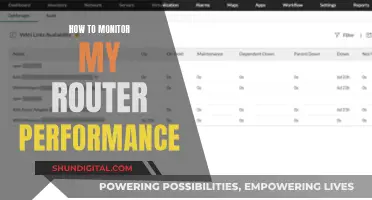
Blind-spot monitoring (BSM) is an advanced driving assistance system (ADAS) designed to increase safety by alerting the driver to vehicles that may not be visible in their side-view or rearview mirrors. BSM uses radar, ultrasonic sensors, and cameras to detect vehicles within the car's blind spots and alerts the driver using visual, audible, or tactile indicators.
Honda LaneWatch™ is a similar system offered on Honda vehicles from 2012 to 2019. It includes a camera installed below the right, passenger-side mirror that transmits images to the central display screen when the right turn signal is activated, providing a clear view of the vehicle's blind spot. While both systems enhance the driver's awareness of their surroundings, they are not replacements for proper mirror usage and turning to check blind spots.
What You'll Learn
- LaneWatch is a camera-based system that projects a live feed of the vehicle's right-side blind spot
- Blind-spot monitoring uses radar sensors in a car's rear bumper
- LaneWatch was introduced in 2012 and is still available on six Honda models
- Blind-spot monitoring is now standard on 85% of new vehicles
- LaneWatch is only available on the passenger side mirror

LaneWatch is a camera-based system that projects a live feed of the vehicle's right-side blind spot
LaneWatch is easy to use and can be activated in two ways. Firstly, it automatically turns on when the right turn signal is activated. Secondly, it can be manually turned on or off by pressing a button on the end of the turn signal lever. This gives drivers control over when they want to use the system, ensuring it is not a distraction when not needed.
While LaneWatch has been well-received by some drivers who appreciate the live video feed, others have criticised it for only covering one side of the vehicle and for being less effective at night or in poor weather conditions. In recent years, Honda has begun phasing out LaneWatch in favour of traditional blind-spot monitoring systems, citing customer preferences and the decreasing cost of radar sensors.
As of 2019, LaneWatch was still offered on six Honda models, including the Civic, Clarity, Fit, HR-V, Insight, and Ridgeline. However, it is expected that LaneWatch will be discontinued in future models, with Honda focusing on radar-based blind-spot monitoring systems instead.
Finding the Right Screw Size for V248 Monitors
You may want to see also

Blind-spot monitoring uses radar sensors in a car's rear bumper
Blind-spot monitoring (BSM) is a safety feature that uses radar or ultrasonic sensors embedded in each side of a car's rear bumper to detect vehicles approaching the rear of the car in an adjacent lane. These sensors are usually quarter-size round indentations in the bodywork or fascias. More advanced BSM systems also employ side-mounted cameras.
When the BSM system detects a vehicle about to enter a blind spot, it warns the driver that a particular adjacent lane is not clear. The alert typically comes in the form of a yellow warning light on the outboard rearview mirror on the side of the oncoming car. The alert may also appear on the vehicle's A-pillar, driver-information display, or head-up display. Some BSM systems also provide an audible alert, often triggered when the driver indicates to merge into an occupied lane.
The BSM system acts as an early warning system for vehicles about to pull alongside, eliminating some of the guesswork from effectively positioning a vehicle's outboard mirrors. It can increase driving awareness, prevent accidents, and minimise the severity of others.
Aftermarket BSM kits are available for older cars that did not come equipped with the technology. These kits typically include sensors and indicators, with the sensors acting as the eyes of the system. The sensors, usually radar or sonar, detect an oncoming vehicle when it is a specific distance from the car. Once a sensor detects an approaching vehicle, it transmits an alert to the indicators, which typically include warning lights and an audio alarm.
Monitor Shower Faucet Parts: Where to Find Them
You may want to see also

LaneWatch was introduced in 2012 and is still available on six Honda models
Honda LaneWatch was introduced in 2012 and is still available on six Honda models, including the 2019 Ridgeline, 2019 Insight hybrid, Civic, Clarity, Fit, and HR-V. LaneWatch is a camera-based system that displays a live feed of the vehicle's right-side blind spot on the car's central display screen when the right turn signal is activated. The camera is mounted below the right passenger-side mirror, providing a clear view of the side of the car to make lane changes and turns safer and easier.
LaneWatch is intended to enhance safety and is not a substitute for safe driving practices. It can be turned on and off manually and customised in the settings. While LaneWatch provides a practical solution to checking blind spots, it has received mixed reviews. Some users appreciate the simplicity and practicality of the system, especially in heavy traffic and when turning across bike lanes. However, others have criticised it for only covering one side of the vehicle and being less effective at night or in poor weather conditions.
As an alternative to LaneWatch, Honda is now focusing on traditional blind-spot monitoring systems, which use radar sensors instead of cameras. Blind-spot monitoring systems typically flash alerts in the side-view mirrors when a vehicle is in the driver's blind spot, and some include a rear cross-traffic monitor that alerts drivers to oncoming traffic when reversing. While LaneWatch provides a visual feed, blind-spot monitoring relies on audio and visual cues to warn drivers.
The shift towards blind-spot monitoring is driven by consumer expectations, as it has become an industry-standard feature, and the decreasing cost of radar sensors as the technology becomes more common in semi-automated and fully automated vehicles. While LaneWatch is an innovative and useful feature, it may not be able to keep up with the evolving safety technologies in the automotive market.
Choosing the Right Monitor Size for Competitive CS:GO
You may want to see also

Blind-spot monitoring is now standard on 85% of new vehicles
Honda, in particular, has made the shift from its LaneWatch camera-based system to traditional blind-spot monitoring. LaneWatch projected a live feed of the vehicle's right-side blind spot on the car's infotainment screen when the driver turned on the right-hand turn signal. However, this system had limitations, including only monitoring one lane instead of two and being less effective at night or in the rain.
With blind-spot monitoring, sensors are mounted on the side mirrors or rear bumper to detect vehicles in adjacent lanes. If a vehicle is detected, the driver is alerted through audible and/or visual warnings, such as flashing lights and chiming sounds. Some vehicles also use cameras to complement the sensors or as the main part of the system, providing a live feed of the blind spot.
Blind-spot monitoring is now widely available across different vehicle types and price points, from subcompact cars to large trucks, and from budget-friendly options to luxury vehicles. This technology is no longer exclusive to luxury cars as costs have decreased, making it more accessible to a broader range of drivers.
The inclusion of blind-spot monitoring as a standard feature in 85% of new vehicles demonstrates the automotive industry's commitment to enhancing safety and convenience for drivers. This feature not only helps prevent accidents but also provides peace of mind and confidence while driving, making it a valuable addition to modern vehicles.
Monitoring JVM Memory Usage in WebLogic: A Comprehensive Guide
You may want to see also

LaneWatch is only available on the passenger side mirror
LaneWatch is a camera-based system that Honda introduced in 2012. It is only available on the passenger side mirror, and projects a live feed of the vehicle's right-side blind spot onto the car's infotainment screen. LaneWatch is activated by the right-hand turn signal, or by pressing a button on the turn signal lever.
The fact that LaneWatch is only available on the passenger side mirror is a key distinction between it and traditional blind-spot monitoring systems, which monitor both sides of the vehicle. This means that, with LaneWatch, drivers still need to manually check their left-side blind spot when switching lanes or merging to the left.
Some drivers have expressed a preference for traditional blind-spot monitoring systems, which use sensors and lights to indicate when a vehicle is in the car's blind spot. These systems monitor both sides of the vehicle, whereas LaneWatch only covers the right-side blind spot.
However, others prefer the LaneWatch camera as it provides a live video feed, allowing drivers to see exactly what is in their blind spot, rather than relying on a sensor and a light. Some drivers also find that LaneWatch makes lane changes easier, as they don't need to turn their head to check the mirror.
It is worth noting that LaneWatch can be less effective at night or in low-visibility conditions, such as rain, as it may be harder to make out the details of the feed.
G-Sync Monitor: Does the Asus G751J Support It?
You may want to see also
Frequently asked questions
Honda Lanewatch is a camera-based system that projects a live feed of the vehicle's right-side blind spot onto the car's infotainment screen.
A blind spot monitor is a traditional system that uses radar sensors in a car's rear bumper to detect vehicles in the driver's blind spot. When a vehicle is detected, the system illuminates an indicator in the side-view mirrors and may also flash and beep.
Honda Lanewatch provides a live video feed of the vehicle's blind spot, while a blind spot monitor uses radar sensors to detect vehicles in the blind spot and provides an indicator in the side-view mirrors. Lanewatch only covers the right side of the vehicle, while blind spot monitoring systems typically monitor both sides.







